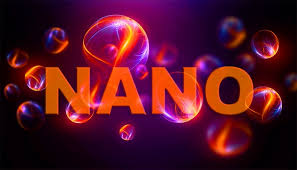The structure of zigzag nanotubes and the tendency to increase the modulus of elasticity to the value of Armchair_ Zig Zag (based on PhD in nano-microelectronics) (PhD in research)
Researcher and author: Dr. ( Afshin Rashid)
Note: So that zigzag specimens always tend to increase their modulus of elasticity and reach the corresponding value corresponding to the ideal structure of the armature. The direction of rolling up (rolling or chiral vector) of graphene layers determines the change in electrical properties of nanotubes.
Chirality describes the angle of the hexagonal carbon nanotube lattice. Nano seat tubes - so-called because of the shape of the seat like their edges - have the same chiral indexes and are highly desirable for their complete guidance. They are not unlike zigzag nanotubes , which may be semiconductors. Converting a 30-degree graphene sheet changes the nanotube that changes from chair to chair or zigzag or vice versa. While MWCNTs always reach and reach at least the same level of conductivity of metals, the conductivity of SWCNTs depends on their chiral vector.
The properties of carbon nanotubes are not the same.At present, SWCNTs are prepared by various techniques such as arc discharge, hydrocarbon pyrolysis in the presence of catalyst, laser evaporation and chemical vapor deposition. , Spring-like and spiral. Existence of different structures expands the properties and applications of SWCNTs, but newly synthesized SWCNTs contain many different nanotubes, which is the main obstacle to their use in high-efficiency nano-equipment. It has been shown that the physical and electronic properties of a SWNT depend on the diameter of the tube and its structure (m, n). In most applications, we need nanotubes with the same properties. Example The performance of a CNT-based nanoelectronic device is significantly improved by using the same nanotubes. Field effect transistors with on / off ratios of 106, using carbon nanotubes enriched with (5,
Conclusion :
Changing the structure and evolution and changing the chiral angle of monolayer and multilayer) CNT and CNTs carbon nanotubes are widely used in energy storage, nanocomposite materials, nanoelectronics and nanosensors, resulting in (layer change and chiral angle failure) The creation of these properties is due to their large surface area, hollow structure, high mechanical strength, excellent electrical properties and unique electronic bond structures.
Researcher and author: Dr. ( Afshin Rashid)
PhD in Nano-Microelectronics




